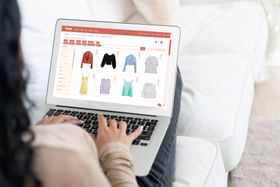Why Product Recommendations Also Require Merchandising Rules
Updated September 3, 2025

Product merchandising recommendation widgets can hugely increase eCommerce sales in a manner of ways. Personalization in recommendations means that the customer’s shopping experience and therefore brand image is improved. By recommending products that customers are more likely to buy, their product discovery journey is improved. This requires work to make sure that the recommendations produce the desired results. This is achieved through a strong algorithm, but not just the AI alone. Something else that should not be overlooked when it comes to recommendations is merchandising rules.
Merchandising rules are manual conditions that override the algorithm machine learning. These rules are put into place in order to target specific criteria. They give the merchants the chance to customize how they want their store to appear. When we think of merchandising, we usually think about the store layout, but this also applies to recommendations.
Why Use Merchandising Rules in Recommendations?
The AI algorithm that works to create personalized recommended products to each shopper is incredibly useful and valuable, but merchants need control and flexibility over what their shoppers see. The AI can’t always be allowed to do its own thing, there should be restrictions and recommendations molded to fit merchants needs.
This works by adding recommendation rules that override the algorithm that correlate to business policies and objectives. If a business has certain campaigns, promotions or goals, these can be reflected in the recommendations widget through merchandising rules.
Getting Started
Merchandising rules should only be set once the algorithm has been established without any human intervention. The product recommendation engine studies real-time user behavior in order to offer shoppers the most relevant and profitable recommendations. This learning needs to take place before certain rules are implemented. Once the machine has its conclusions, necessary rules can be added, and once user preferences have been learned, then other rules can also be implemented. This creates the highest chance of the most positive results.
Types of Merchandising Rules
There are three main types of merchandising rules:
- “Include” Rule
This rule ensures that certain products ARE shown in the recommendation widget. For example, during a seasonal campaign, the merchant could decide that recommendations should always include the current seasonal relevant items. This could also apply to including any kind of items; most popular, least popular, most expensive, least expensive, etc.
- “Exclude” Rule
This rule ensures that a certain subset of products is NOT presented in the recommendation widget. For example, products over a certain price range should not be included in the recommendation widget.
- “Pin” Rule
The pin rule can override any other merchandising rules or algorithm learning, and always pin one product or subset to the top of any recommendation widget. E.g. if a company has excess of one item and wants to shift it, this is what would always be pinned to show first in any recommendation widget.
There is the option to have multiple filter rules, but what is important is that there are no conflicting rules. Merchants should ensure that this doesn’t take place, and in the case it might, be sure to specify which rules take precedence over the others. There should be a hierarchy of rules to make sure that no confusion ensues.
Which Rules to Add
There are two ways to figure out which merchandising rules will best suit your businesses recommendation needs. The first of these is understanding customers. There are four stages of a customer journey, and each stage would require different recommendations.
The first stage is AWARENESS. This is when shoppers have just become aware of your business, so they don’t have explicit intent or knowledge yet. In this case, the recommendations should be ‘Best Selling Products’ in order to demonstrate why others love your brand, and entice them with your most popular items.
The second stage is CONSIDERATION. In this stage, they are already looking at a certain kind of product, and the best recommendation rules to add should be upsell recommendations. Through providing the customer information about more expensive but also better quality products, you improve the chances of increasing conversions and AOV.
The third stage is DECISION. By this point they have settled on one product, and cross-sell recommendations are useful in order to add to their overall purchase. This helps the customer as the products complement each other, and boosts AOV.
The last stage is VALIDATION. This is when the customer has completed their purchase, and the payment has gone through. At this stage other cross-sell items can be re-offered, or other repurchase or re-fill options can be recommended.
There are different ways that a business can fully understand their customer mindset and the customer journey. These are through examining customer data, interviewing customers, following the traffic journey, engaging on social media and interacting with different customer groups.
The second way of figuring out which merchandising rules will best suit customer needs is through looking at product relevancy. The current product relevance can be seen through current data that is being gathered on the website. Current trends, best sellers and popular products, seasonal products, sales and discounted items can all make sure that the right products are being recommended. It’s a great idea to know your products and where they stand in relation to your business, to know which are the best products to recommend.
When To Add Rules
Knowing when to add rules is a personal business decision that each business needs to make for themselves depending on their views and objectives. Personalized recommendations can apply to individual shoppers, but can also be applied to larger customer segments. In this case, personalization at scale can be useful to recommend items to certain groups. For example, all visitors who viewed 2 or more dresses, should be recommended dresses. High spending customers should be recommended other big ticket products. Cart abandoners should be recommended similar items to those they have abandoned, and so on.
Merchandising rules should be used to provide the best opportunity for cross-selling to take place, so similar products should be recommended to those that are being viewed. E.g. If someone is viewing a tent- a sleeping bag or other camping equipment should be recommended. This should not be overridden by merchandising rules. However, if your website is focussed on camping, then within those recommendations, all of the most popular camping equipment should be displayed.
If someone has come onto your website with an explicit intent to view shoes, a merchandising rule should state that shoes are the only product they see in their recommendations. Disrupting their journey by recommending them to other products sold would not be a preferred recommendation rule.
Don’t Forget To Test
As with most adjustments or new attempts in eCommerce, new strategies should be tested before they are put into place. A/B testing can be crucial in order to know that you’re using the best recommendation strategy for your business. Perhaps you think that pinning a certain product will produce great results, but your tests could actually show you that the opposite is true. This is a perfectly normal part of the journey; testing is there to help you save all the conversions you can.
These tests can be run when new rules are set, but there should also be tests continually running whilst certain rules are in place. This is because the effectiveness of certain rules and strategies might change over time. This could be due to changing customer behavior, or rules becoming a victim of their own success so they are no longer relevant. Don’t wait for a dip in sales to check if your rules are still doing their job, instead keep the tests running and keep on top of which recommendation rules are still working for you.
Conclusion
Adding product merchandising rules to product recommendations give merchants control and flexibility over their merchandising. Recommendations should reflect the business goals, methods and strategies, and merchants are able to decide how to implement this. The result of this is users enjoying the best possible customer experience journey, which benefits both merchants and shoppers alike.






